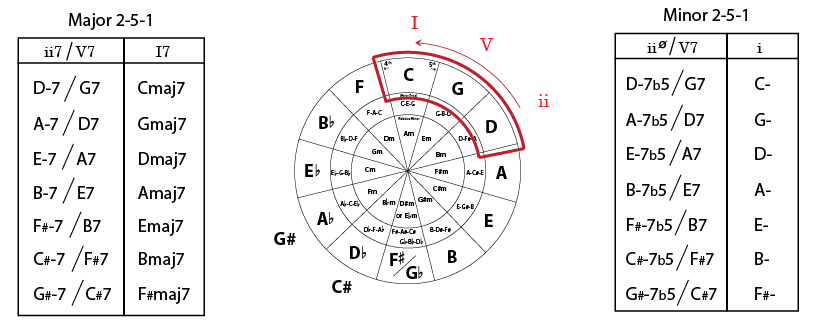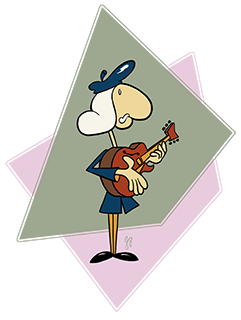The PDF below lists all the major and minor 2-5-1 turnarounds and also shows how the the 2, 5, and 1 in any diatonic sequence are actually all neighbors in the circle of 4ths. If you go counter-clockwise on the circle of fifths, you see each key moving in fourths. Any three counter-clockwise movements of that cycle is a 2-5-1 progression in the key of the last note.
| majorminor251s.pdf |
This means if you want to solo over a song using chords only in the diatonic progression of a Major key (C in this case), you can play any note of the C Major scale and you will always be in some sort of relative harmony with any of the diatonic chords played under it: Cmaj7, Dm7, Em7, G7, Am7 and B-7b5.




 RSS Feed
RSS Feed
